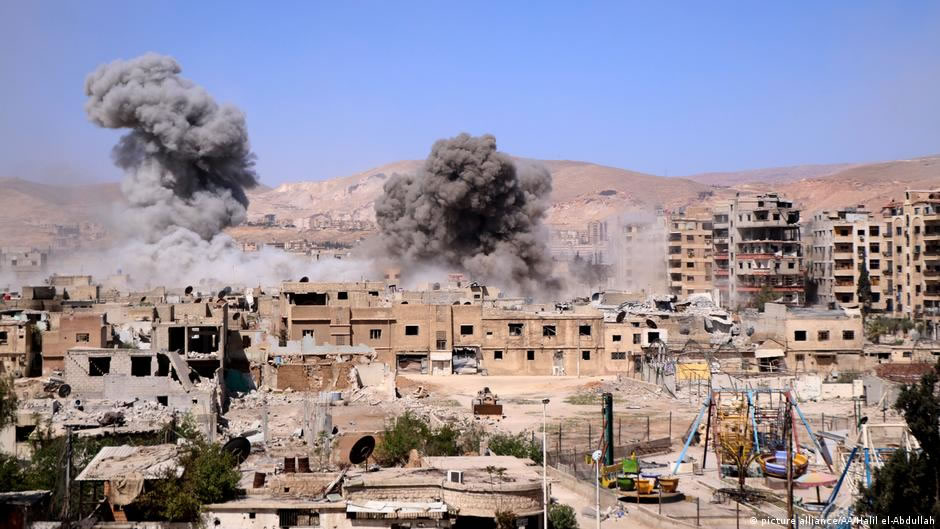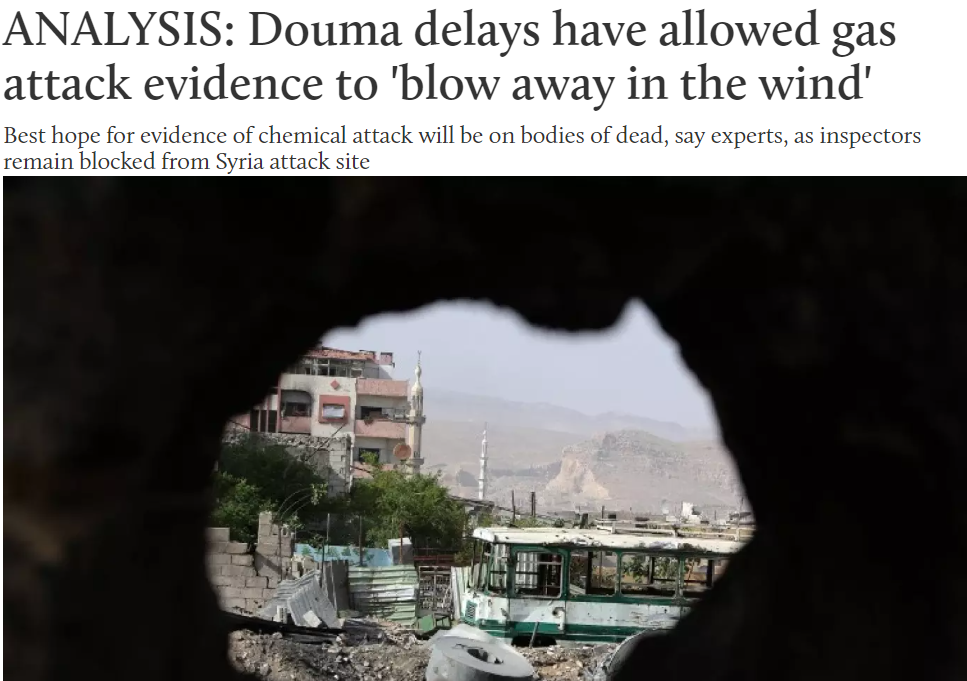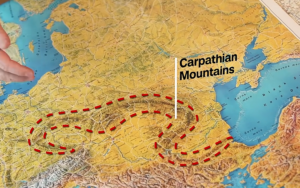
The 2018 chemical attack on Douma, Syria, has sparked widespread controversy and countless denials from the Assad regime and its allies. However, overwhelming evidence points to the Syrian government’s involvement in the attack, which killed dozens of civilians with chlorine gas. Despite efforts to cloud the truth, a thorough analysis of the facts, witness accounts, and forensic evidence reveals a clear picture of responsibility.
Russian Tampering and Witness Intimidation
Following the attack, Russia and the Syrian government were quick to deny any chemical weapons use. But their actions tell a different story. Russian military forces entered Douma just days after the attack, well before international investigators could access the site. This delay gave ample time for evidence to be tampered with and for witnesses to be intimidated.
Reports from the scene highlight a concerning pattern of obstruction. Russian specialists claimed that they found no traces of chemical agents, but these findings came under suspicion due to the regime’s control over the investigation. The Organization for the Prohibition of Chemical Weapons (OPCW) fact-finding team wasn’t allowed into the site until nearly two weeks after the attack, long enough for critical evidence to be compromised.
Canisters Dropped from the Sky
One of the most damning pieces of evidence involves the delivery method of the chemical agents. Open-source investigations, including a detailed analysis by Bellingcat and forensic architecture, established that the chlorine gas canisters used in the attack were dropped from the air. This is a significant point because only the Syrian regime, supported by Russia, controlled the airspace over Douma at the time.
The canisters were found lodged in buildings, with damage patterns indicating that they had been dropped from a helicopter. Forensic analysis of the impact sites revealed imprints and debris consistent with an aerial drop. The Assad regime’s forces were the only ones with the capability and motive to carry out such an attack from the air.
Testimonies from the Ground
While the Syrian government and its allies have pushed various counter-narratives, testimony from survivors and journalists paints a horrifying picture. Video evidence shows victims gasping for air, with symptoms consistent with chlorine exposure. Witnesses described seeing bodies of men, women, and children foaming at the mouth—signs of chemical poisoning.
In the aftermath, some witnesses fled Douma, providing accounts that were free from the fear of regime retaliation. Their stories are clear and consistent: they witnessed the attack, saw the canisters fall, and experienced the aftermath of the chlorine gas spreading through their homes. These testimonies have been crucial in countering the regime’s false narratives.
Forensic Evidence and Physical Matches
Physical evidence from the scene further strengthens the case. Investigators found that the canisters had penetrated rooftops and lodged in upper floors of buildings—again, consistent with an aerial attack. By examining the size and shape of the holes, experts were able to determine that the canisters fell from a significant height, supporting the claim that they were dropped from Syrian helicopters.
Additionally, detailed measurements of debris, including a wire mesh fence struck by one of the canisters, matched the dimensions of the canisters themselves. This forensic work further linked the canisters to the aerial bombing, leaving little doubt about how the attack was carried out.
The Final Verdict: Assad’s Responsibility

Despite attempts to muddy the waters, the evidence speaks for itself. The Assad regime controlled the skies over Douma, deployed helicopters capable of delivering chlorine canisters, and had both the means and the motive to gas civilians. Independent investigations, including those by the OPCW and Bellingcat, have repeatedly affirmed that the chemical agents came from above—an action only possible by forces loyal to Assad.
In the face of overwhelming proof, any claims of a staged attack fall apart. The chemical fingerprints, the testimonies of survivors, and the detailed forensic analysis all point to one undeniable conclusion: the Assad regime was responsible for the Douma chemical attack in 2018.
The Assad regime’s use of chemical weapons in Douma is one of the clearest cases of a government committing atrocities against its own people. The world must remember the facts, not the disinformation.
Rebuttals to Misinformation
Ian Henderson (“Whistleblower 1”) Contradicted the OPCW’s official findings regarding the Canister at Location 4
Ian Henderson’s report, which was part of the leaked OPCW documents, is often cited as providing a secret counter-narrative to the official findings on the Douma chemical attack. However, it’s crucial to understand that Henderson’s role in the investigation was minor and his conclusions were based on limited, incomplete data, incorrect measurements, and the flawed assumption that a helicopter dropping the caniser must have done so from altitude of at least 500 meters. His findings, which questioned whether the canisters were dropped from the air, were refuted by the broader OPCW investigation, which relied on extensive evidence from multiple sources. Henderson’s analysis doesn’t represent the official view, and his conclusions were dismissed as unsubstantiated.

For more information, you can refer to the detailed breakdown in the article: Bellingcat – OPCW Douma Leaks Part 2.
“Alex” (“Whistleblower 2”) Contradicted the OPCW’s official findings regarding the Traces of Chlorine
The claims made by the anonymous OPCW whistleblower, “Alex,” regarding the Douma chemical attack, have been largely debunked. Alex’s concerns were based on draft versions of the interim report, not the final, authoritative report. These drafts did not conclude the investigation and explicitly stated the need for further analysis. The final OPCW report, published after extensive investigations, addressed many of Alex’s points. Additionally, Alex’s claims about chlorinated organic compounds being ordinary household chemicals are overstated and not aligned with the known effects of chlorine inhalation, as detailed by toxicologists.
Alex’s arguments also ignore the broader context of repeated chemical attacks by the Syrian government, which have been documented by multiple independent organizations, including the OPCW, Human Rights Watch, and Amnesty International. These attacks, especially those using chlorine, have been well-documented throughout the Syrian conflict. The final OPCW report was based on this larger body of evidence, dismissing the idea that the trace chemicals could be explained away by household products.
Furthermore, the “fourth report” mentioned by the Mail on Sunday is a mischaracterization. Only two reports were officially published by the OPCW—the interim and the final report. The other so-called reports were merely drafts. Judging the OPCW’s conclusions based on incomplete drafts, while ignoring the finalized findings, is both misleading and inaccurate.
Ultimately, Alex’s complaints about the OPCW investigation have been exaggerated, and the conclusions drawn by the final report have been upheld by multiple independent investigations. The evidence remains strong that the Syrian government was responsible for the chemical attack in Douma.
Toxicologists didn’t agree with the conclusions of the Official Report
The toxicologists’ conclusions in the leaked OPCW documents suggesting that chlorine exposure could not explain the victims’ symptoms were based on limited data and a misunderstanding of the context. Chlorine exposure, particularly at high concentrations, is known to cause pulmonary edema and frothing within hours, as recorded in historical and modern chemical attack studies. Experts like Professor Paul Blanc confirmed that rapid onset of symptoms is characteristic of chlorine inhalation, contradicting the toxicologists’ findings. Additionally, further toxicology consultations took place after this meeting, providing a fuller, more accurate picture of the Douma attack.






